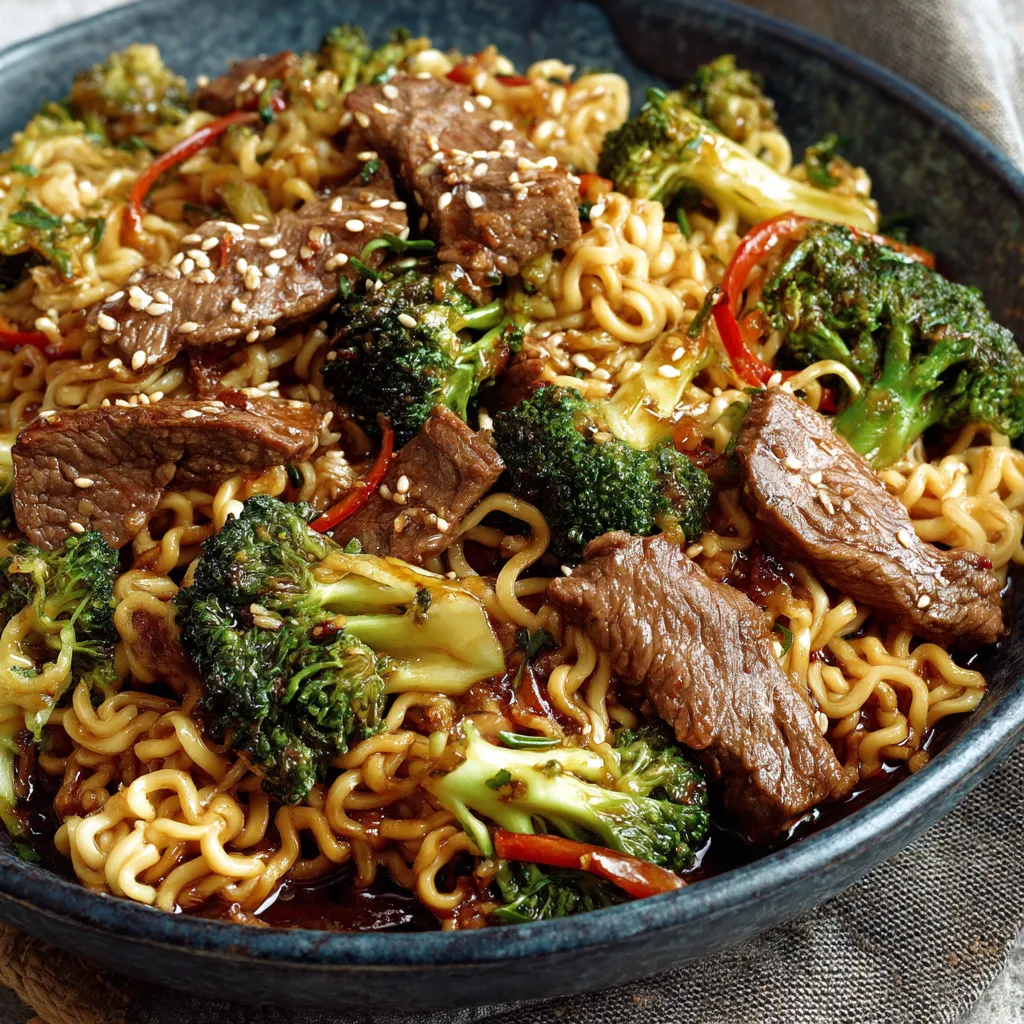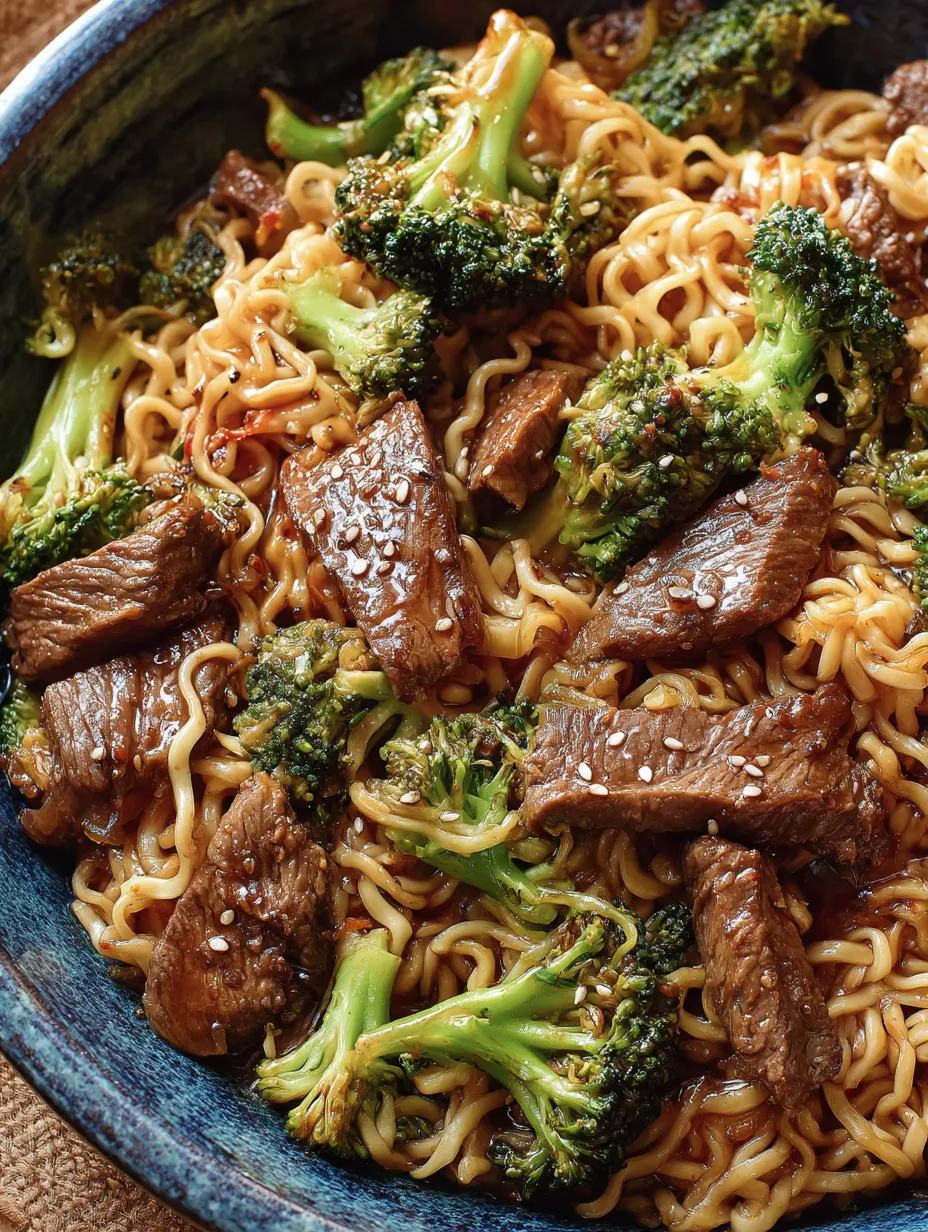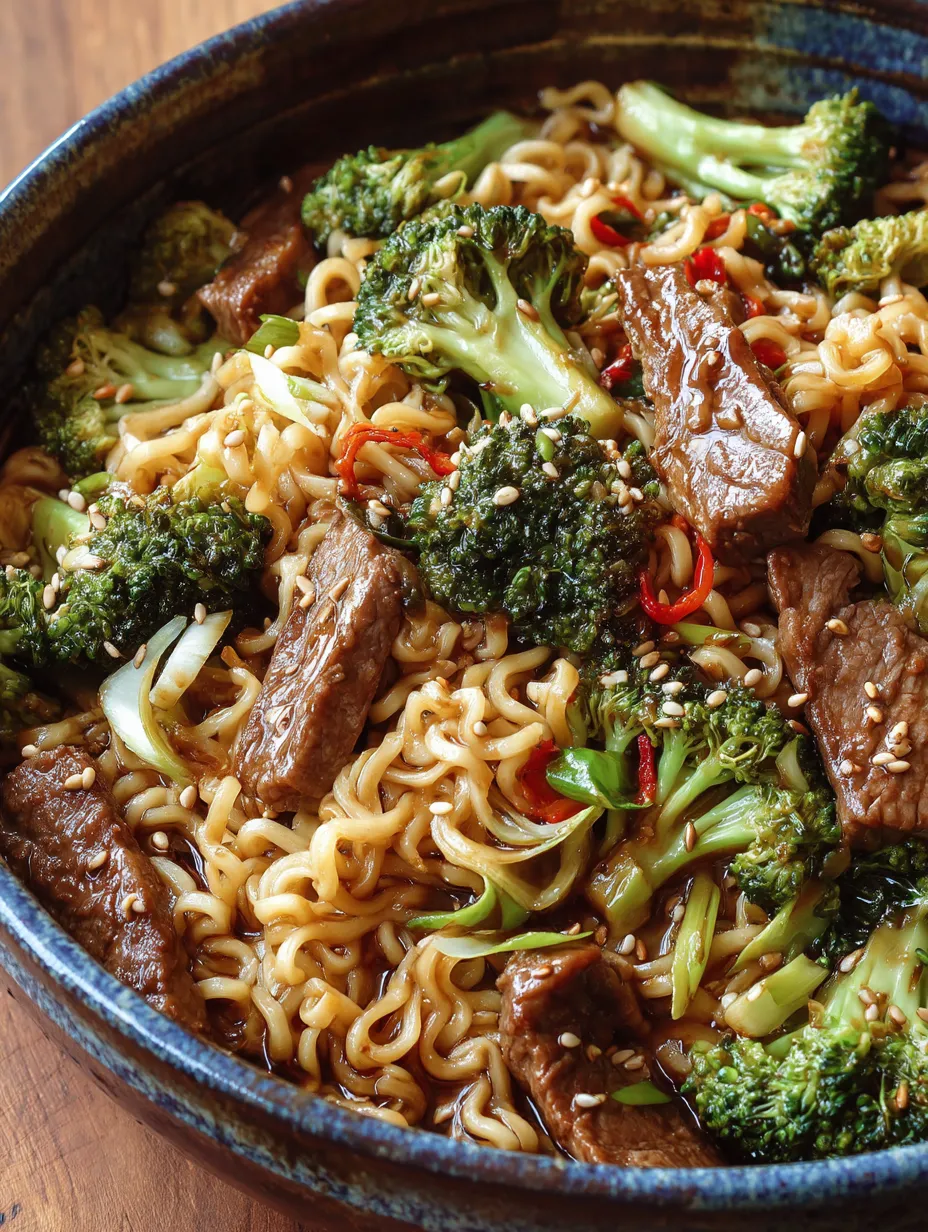 Pin it
Pin it
I discovered this recipe last winter during that weird week between Christmas and New Year's when my fridge was full of random ingredients but I couldn't bear the thought of another ham sandwich. Throwing together steak from the freezer, some slightly sad broccoli, and those always on hand ramen packets created something that my family now requests regularly. The beauty of this dish lies in how it transforms basic pantry staples into something that tastes like legitimate takeout - but fresher, less greasy, and ready in the same amount of time it would take for delivery to arrive.
My teenage son's friend was over for dinner when I first made this, and I watched him take that polite "I'll try a little" portion, then immediately return for a heaping second helping. His mom texted me the next day asking what I'd fed him because he'd apparently announced at breakfast that he'd had "the best Chinese food ever" at our house. When a picky 16 year old gives that kind of endorsement, you know you've struck culinary gold.
Perfect Ingredients
Sirloin steak provides the ideal balance of tenderness and flavor without breaking the bank. The quick cooking time keeps it juicy while developing beautiful caramelization that cheaper cuts often lack.
Broccoli florets create perfect little sauce catchers with their textural contrast of tender stems and slightly crisp tops. The vibrant green color also makes this dish visually appealing.
Ramen noodles absorb sauce beautifully while maintaining that slightly chewy texture that makes stir fries satisfying. Ditching the seasoning packets lets you control the flavor without sodium overload.
Homemade sauce combines several pantry ingredients into something far greater than the sum of its parts. The balance of salty, sweet, tangy and umami notes creates depth that bottled sauces simply can't match.
Sesame oil adds that distinctive nutty aroma that immediately signals "authentic Asian flavor" to your brain. Just a small amount transforms the entire dish.
 Pin it
Pin it
Step-by-Step Instructions
- Slicing steak properly against the grain
- creates tender, bite sized pieces that cook quickly and evenly. That 1/4 inch thickness is crucial - too thin and they overcook, too thick and they remain tough.
- Making sauce first
- allows the cornstarch to fully dissolve and the flavors to begin melding. This simple step prevents those dreaded cornstarch lumps that can ruin a beautiful sauce.
- Cooking noodles just until tender
- prevents them from becoming mushy when they finish cooking in the sauce. That brief cold water rinse stops the cooking process at exactly the right moment.
- Browning steak undisturbed
- creates that beautiful caramelization that contributes essential flavor. Patience during this step makes the difference between gray, steamed meat and properly seared steak.
- Steam cooking broccoli briefly in the same pan
- captures all the flavors while maintaining its vibrant green color and slight crunch. This method prevents both overcooking and extra dishes.
- Combining everything at the end
- allows each component to maintain its distinct texture while sharing flavors. This final quick toss ensures every bite contains the perfect balance.
- Garnishing with sesame seeds
- adds visual appeal and subtle texture that elevates the presentation from home cooking to restaurant style. Those tiny details make a noticeable difference.
My first attempt at this recipe taught me valuable lessons about timing. I initially added the broccoli too late, resulting in a dish where everything else was perfect but the broccoli remained too crunchy. The current method of steam cooking it briefly before adding other ingredients creates perfect texture every time. Another game changing discovery was using both honey and hoisin in the sauce - the honey provides sweetness while the hoisin adds that complex umami depth that makes the sauce taste authentic.
Perfect Pairings
Simple sides complement this already complete meal. Crispy egg rolls from the freezer section create restaurant style dinner experience with minimal additional effort. Cucumber salad with rice vinegar and sesame oil provides refreshing contrast to the rich main dish. For casual entertaining, serving in Asian style bowls with chopsticks elevates the presentation while creating interactive dining experience. When looking for a beverage pairing, hot green tea or cold Japanese beer complements the flavors perfectly.
Creative Adaptations
Protein variations transform this flexible recipe. Chicken thighs create equally delicious results when sliced thinly and cooked just until done. Tofu provides excellent vegetarian option when pressed well, cubed, and browned before following remaining recipe. Shrimp adaptation requires minimal cooking time - just until pink - to prevent rubbery texture. Vegetable swaps work beautifully depending on what's in your fridge - snow peas, sliced bell peppers, mushrooms, or baby bok choy all integrate seamlessly with the sauce and cooking method.
Keeping Fresh
Preparation strategies streamline busy evenings. Make ahead components save time when preparing sauce and slicing meat the night before, storing separately in refrigerator. Cooking tips ensure best results - keeping components separate if not serving immediately prevents noodles from absorbing all the sauce. Reheating works best in a hot skillet rather than microwave to restore some of the textural contrast. Leftover transformation creates completely different meal when serving cold as Asian noodle salad with added cucumber and cilantro.
 Pin it
Pin it
This beef and broccoli ramen stir fry has become our family's reliable solution for those evenings when takeout is tempting but the budget (or wait time) says otherwise. The combination of familiar flavors in a quick, one pan format creates something that satisfies cravings while being significantly healthier and more economical than restaurant versions. While not particularly revolutionary, it hits that perfect sweet spot between authentic taste and weeknight practicality that makes dinner feel special without requiring special effort. Sometimes the best recipes aren't about culinary innovation but rather clever combinations of pantry staples that deliver maximum flavor with minimum fuss.
Frequently Asked Questions
- → Can I use other types of noodles?
- Absolutely! While ramen noodles cook quickly and give this dish its signature texture, you can substitute with other Asian noodles like lo mein, soba, or rice noodles. Just cook according to package directions.
- → What cut of beef works best for this stir fry?
- Sirloin is recommended for its tenderness and flavor, but you can also use flank steak, ribeye, or even skirt steak. For best results, slice the meat against the grain and ensure the strips are uniform in thickness.
- → Can I make this dish ahead of time?
- This stir fry is best enjoyed fresh, but you can prep all ingredients ahead of time. Cook the components and combine just before serving. If you must store leftovers, keep the noodles separate and combine when reheating to prevent them from becoming soggy.
- → How can I make this recipe spicier?
- To increase the heat level, add more red pepper flakes, a drizzle of sriracha, or sliced fresh chilis. You can also add a teaspoon of chili garlic sauce or sambal oelek to the sauce mixture.
- → Can I add other vegetables?
- This recipe is very adaptable! Try adding sliced bell peppers, mushrooms, snap peas, carrots, or water chestnuts for extra texture and nutrition. Just adjust cooking times accordingly as some vegetables cook faster than others.
